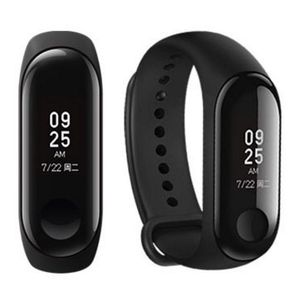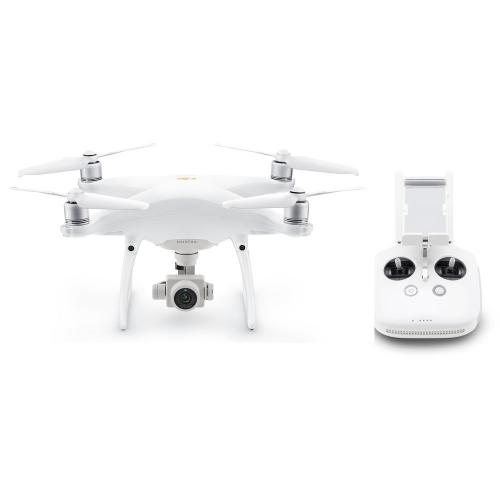


Hot on the heels of the Mavic Pro, DJI has unveiled two of its most advanced drones to date: the cutting-edge Inspire 2 and Phantom 4 Pro. Both models build upon the lauded design and performance of their predecessors, porting over the best of their features and refining them for an unrivaled aerial experience.
The new Inspire 2 features a body design similar to that of its forebear; however, this time it uses a magnesium-aluminum shell for improved rigidity. Like the Mavic Pro, the Inspire 2 is now equipped with obstacle-avoidance sensors that allow it to detect objects up to 98' ahead and 16' above, enabling protected flights indoors and out. Another design upgrade, as well as an added layer of security, is the new dual-battery system, which extends flight times to up to 27 minutes with the X4S camera, and acts as a safety valve in the event of battery failure. Further enhancements include a powerful new propulsion system, which allows the Inspire 2 to accelerate from 0 to 50 mph in only 4 seconds, and top out at 67mph.

DJI Inspire 2 Quadcopter
DJI also equipped the Inspire 2 with an all-new image processing system: the CineCore 2.0, which can record up to 5.2K video in CinemaDNG RAW, Apple ProRes, and other formats. CineCore 2.0 is built into the quad’s nose and will support any camera connected through the dedicated gimbal port. A range of intelligent flight and shooting modes, including the powerful tracking mode Spotlight Pro, are available to support pilots and help them capture even the most complex shots. The Inspire 2 also features an upgraded video transmission system, which features an effective range of up to 4.3 miles, and can deliver both 1080p/720p video, as well as FPV view to pilot and camera operator.
Deciding top-of-the-line wasn’t quite top enough, DJI also unveiled an upgraded version of the Phantom 4. The new Pro model features an uprated camera equipped with a 1" 20MP sensor capable of shooting 4K video at 60 fps. Despite the upgraded camera, the Pro is similar in weight to the original Phantom 4, thanks in part to its titanium-alloy and magnesium-alloy construction. The updated FlightAutonomy system adds dual rear vision and infrared sensors to Phantom 4’s existing obstacle-avoidance sensors, giving it a total of five directions of obstacle sensing and four directions of obstacle avoidance. The Phantom 4 Pro is available in two configurations: a standard version and a “Pro+” model. Both aircraft are identical; however, the Pro+’s controller features a fully optimized 5.5" 1080p screen with DJI GO built in.

DJI Phantom 4 Pro Quadcopter
The Inspire 2 and Phantom 4 Pro are available to order at B&H. Accessories for these state-of-the-art drones are also available, including replacement props, flight batteries, filters, and more. You can purchase the Pro and Pro+ as RTF kits or as individual components, including drones-only and either radio transmitter.
DJI also announced two powerful cameras for the new Inspire 2, the Zenmuse X4S and Zenmuse X5S. Highly upgraded over the previous model, these powerful cameras are ideal complements to CineCore 2.0 image processing system of the new copter. The Zenmuse X4S features a relatively huge 20MP 1" sensor with large, 2.4µm pixels. Combined with CineCore 2.0, it uses enough of its 20MP sensor to capture 5.2K resolution video and then samples it into a sharp DCI 4K video at 60 fps in H.264, and at 30 fps in H.265, at 100Mbps in either case. It also has a high dynamic range of 11.6 stops, maximum ISO of 12,800, and improvements across many other areas over the preceding model. The X4S has a built-in 8.8mm, f/2.8-11 lens with an 84° angle of view.
The Zenmuse X5S is an even more advanced model. It supports interchangeable lenses via a Micro Four Thirds mount, and is capable of capturing 5.2K resolution at 30 fps and 4K at 60 fps. The X5S is built with a 20.8MP Four Thirds sensor with 3.4µm pixels, and has 12.8 stops of dynamic range. It currently supports eight different lenses from Olympus, DJI, and Panasonic, ranging in focal length from 9-45mm (35mm equivalent of 18-90mm). Both of these cameras are also capable of capturing still images at various burst rates, and have an integrated 3-axis gimbal ready for attachment to the Inspire 2.
Ocusync transmits high-quality video—supporting up to 1080p for close-range transmissions or 720 for long-range transmissions. It enables transmitting a signal up to 4.3 miles (line of sight), and can download photos and videos at up to 40 Mbps while in flight. Ocusync works with the DJI Go app, allowing you to stream live video to anyone running the app 720p. And, if you’re using the Pro+ Version 2 controller, you can now stream hi-res video at 1080p. The DJI Go app and Ocusync also provide you with real-time statistics of your aircraft. Yet another benefit of Ocusync is that it allows you to view your FPV video of your flight wirelessly on DJI’s goggles. That’s right, no more USB cable connections to worry about.
Are you looking forward to wirelessly live streaming your flight, and sharing it with others as it happens? Seems like a lot of fun, and a great way to let others share in your fun. Chime in below and let us know.
|
Performance
Flight Control System
Vision Positioning
TOF Sensing System
Transmitter (Remote Controller)
Camera
Gimbal
Flight Battery
General
Packaging Info
|
|||||||||||||||||||||||||||||||||||||||||||||||||||||||||||||||||||||||||||||||||||||||||||||||||||||||||||||
Flight Control System
| GNSS Support | GPS, GLONASS |
3D Object Detection
| Operating Range | 0.7 to 23.0' / 0.2 to 7.0 m |
| Minimum Object Size | 7.9 x 7.9" / 20.0 x 20.0 cm |
| Required Object Reflectivity | >8% |
Vision System
| Vision System | Downward, Forward, Backward, Left, Right |
| Velocity Range | 46 ft/s / 14 m/s at 6.6' / 2 m |
| Maximum Altitude | 32' / 10 m |
| Operating Range | 0.0 to 32.8' / 0.0 to 10.0 m |
| Obstacle Sensory Range | 0.7 to 23.0' / 0.2 to 7.0 m |
| Forward Field of View | 60° (Horizontal) ±27° (Vertical) |
| Downward Field of View | 70° (Front to Back) 50° (Side to Side) |
| Backward Field of View | 60° (Horizontal) ±27° (Vertical) |
| Operating Environment | Surface with Clear Patterns at >15 lux |
Remote Controller / Transmitter
| Operating Frequency | 2.4 GHz (2.4 - 2.483) 5.8 GHz (5.725 - 5.825) |
| Maximum Operating Distance | 22,966' / 7000.04 m at 2.4 G 22,966' / 7000.04 m at 5.8 G |
| Transmitter Power | 26 dBm (2.4 G) 26 dBm (5.8 G) |
| Battery Type | 1 x Built-In |
| Battery Chemistry | Lithium-Ion Polymer (LiPo) |
| Battery Capacity | 6000 mAh |
| Mobile Device Compatibility | Devices up to 6.3" / 160.02 mm Wide and 0.3" / 7.62 mm Thick |
| App Operating System Requirements | Android 4.4 and later iOS 9.0 and later |
Camera
| Sensor | 1" CMOS |
| Effective Pixels | 20 MP |
| Focal Length | 8.8mm / 24mm (35mm Equivalent) |
| Lens Field of View | 84° |
| Aperture | f/2.8 to 11 |
| Minimum Focusing Distance | 3.3' / 1.0 m |
| Photo ISO Range | 100 to 6400 (Manual) 100 to 3200 (Auto) |
| Video ISO Range | 100 to 6400 (Manual) 100 to 3200 (Auto) |
| Electronic Shutter Speed | 8 to 1/8000 Second |
| Photo Resolution | 3:2: 5472 x 3648 16:9: 5472 x 3078 4:3: 4864 x 3648 |
| Photo Format | JPEG, DNG |
| Video Format | 4096 x 2160p at 24/25/30 fps (100 Mb/s MOV via H.265) 3840 x 2160p at 24/25/30/60 fps (100 Mb/s MOV via H.265) 2720 x 1530p at 24/25/30 fps (100 Mb/s MOV via H.265) 1920 x 1080p at 24/25/30/48/50/60/120 fps (100 Mb/s MOV via H.265) 1280 x 720p at 24/25/30/48/50/60/120 fps (100 Mb/s MOV via H.264) |
| Photo Modes | Auto-Exposure Bracketing (AEB), Burst Shooting, Interval, Single Shot |
Gimbal
| Number of Axes | 3 (Pitch, Roll, Yaw) |
| Control Range | Pitch: -90 to 30° Yaw: 0 to 15° |
Flight Battery
| Battery Chemistry | Lithium-Ion Polymer (LiPo) |
| Capacity | 5870 mAh / 89.2 Wh |
| Battery Configuration | 4 S / 17.4 V |
| Maximum Charging Power | 160 W |
Charger
| AC Input Power | 100 to 240 VAC, 50 / 60 Hz |
| Output Voltage | 17.5 V, 5.7 A |
| Power Rating | 100 W |
General
| Number of Rotors | 4 |
| Weight | 48.50 oz / 1375 g (Including Propellers, Battery, Gimbal, Camera) |

Copyright © 2019 All Rights Reserved by Ifexes. Powered By Cyfa Technologies